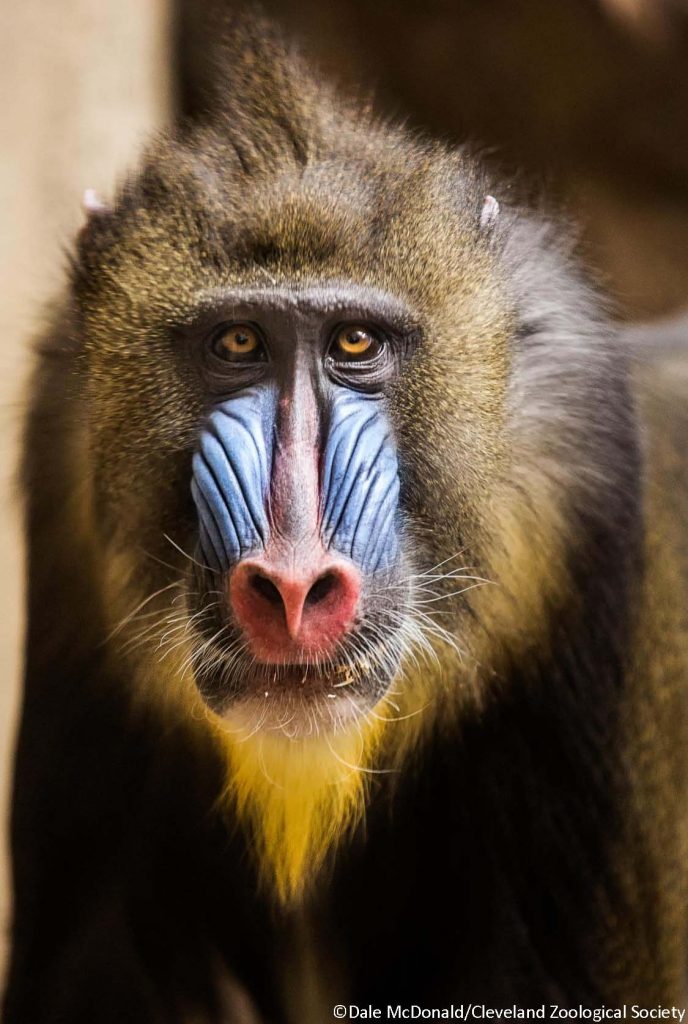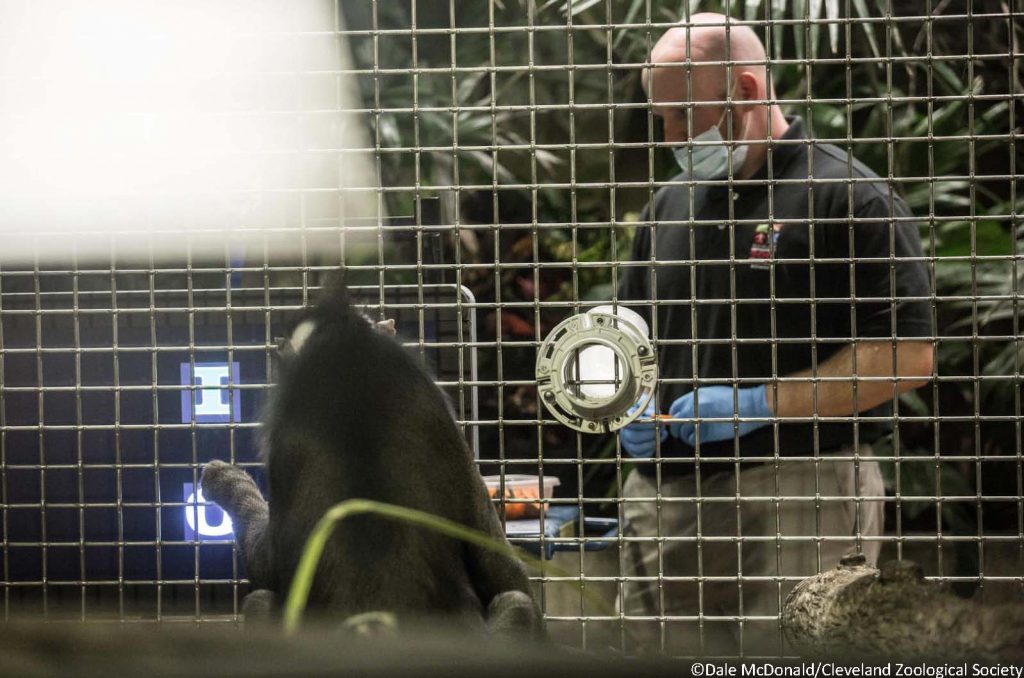
Self-directed behavior as an indicator of welfare
Experimentally evaluating the function of self-directed behavior in mandrills (Mandrillus sphinx).
For the Spring 2018 Hot Topics in Welfare feature, we explore a novel test of self-directed behavior as an indicator of animal welfare. This research was conducted by Austin Leeds and Kristen E. Lukas of Cleveland Metroparks Zoo and was recently published in Animal Welfare.
Self-directed behavior (SDB) has often been employed as an indicator of animal welfare. However, SDB has many functions, and results of studies linking SDB to other indicators of welfare or stress have produced mixed results. For this study, Leeds and Lukas (2018) analyzed the SDB of two zoo-housed mandrills in a unique context. They examined rates of SDB expressed by the mandrills while performing a touchscreen-mediated cognitive task and assessed the impacts of performance (correct or incorrect trials) and task difficulty. The mandrills performed more self-scratching during incorrect than correct trials, but task difficulty did not influence the behavior. Individual differences were also evident, highlighting the important point that welfare indicators can vary at the individual level, as well as between species.
Watch a video presentation about this research narrated by Austin Leeds for more information or contact him at cal@clevelandmetroparks.com.
Cite this work:
Leeds, A. & Lukas, K.E. (2018). Experimentally evaluating the function of self-directed behaviour in two adult mandrills (Mandrillus sphinx). Animal Welfare 27(1): 81-86.

